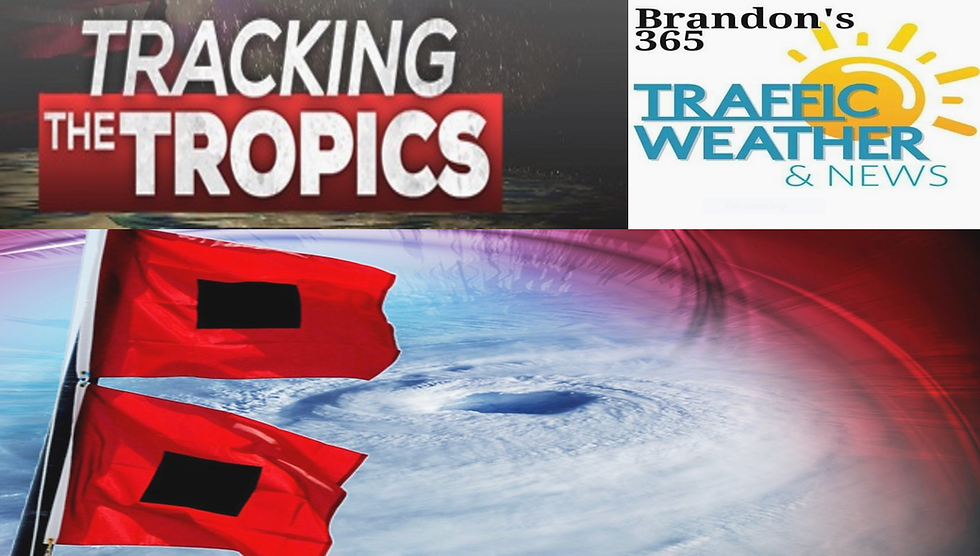HOW MUCH HAS TECHNOLOGY CHANGED WEATHER FORECATING THROUGH THE YEARS?
- Brandon Shipp

- Jan 14, 2020
- 3 min read
FORECASTING WEATHER IN THE PAST: Weather observing started with simply stepping outside and noting what was seen, heard, and felt. Instruments such as the thermometer, anemometer, and rain gauge, developed in the 15th through 17th centuries. Once the telegraph and telephone were invented, observations from various different locations were able to be gathered together and actually used in making forecasts. These forecasts were able to then be communicated from place to place and to a wider audience. Weather systems that were previously not known were now able to be tracked and charted over distance and time. National weather maps were able to be created with much greater detail. In the 1920s weather balloons, which would provide weather data such as temperature and wind at various levels of the atmosphere, were launched from different locations. Once this upper air data was avaliable, the first forecast models were devised. By the late 1940s weather radar was launched. By the late 1980s “Doppler” radar was developed and the National Weather Service came up with a plan to set these radar sites up at different locations to provide nearly nation-wide radar coverage. Radar allowed meteorologists to view and display severe weather systems as well. This increased the accuracy and timing of weather watches and warnings. Meteorologists were able to give people advanced warning on Thunderstorms and tornadoes like never even imagined. By the 1950s, numerical forecasts (models) were being done on a daily basis. Now, short and medium range models are prepared at least four times per day with computers taking much less time to display and disseminate the information. Many shorter range models are issued even more often. Now with wide use of the internet, many websites actually give users access to these models and their forecast output.
The ability to view weather systems and clouds from outer space was a momentous occasion in the world of meteorology. In 1960, TIROS-1 took the first satellite image of the clouds and sent it down to earth it produced 23,000 images of earth.. These early satellites were what was called “polar orbiters” and they would provide a photo once or twice a day. Satellite continued to advance over the late 20th and now 21st centuries to not only provide cloud images, but other atmospheric conditions, similar to that provided by weather balloons. This data is available through satellite observations at a wider range of locations and more often as well. Through all of this development, the way forecasts were given to the public also changed dramatically. The first weathercasts were broadcast on radio during the 1920s. Television developed in the 1940s and 50s giving birth to a new way of “showing” the weather. These TV weathercasts allowed forecast information to be delivered to an even wider audience. Television weathercasts started out with a few graphics such as a paper weather map and a wipe-board with some current temperatures. Forecasts were drawn by hand onto weather maps using markers and magnets. By the 1980s meteorologists began using computer displays for weather information. This allowed more information to be displayed in a shorter amount of time. Today’s television weather systems are not only used to make and display weather graphics, but also to forecast weather by meteorologists. These advanced weather systems allow satellite, radar, and even forecast model information to be broadcast over the airwaves. The timing of these technologically advanced systems corresponded perfectly with the development and use of the internet. Now a greater audience than ever before has access to weather information and forecasts. Dual Pol Radar has been a big game chganger over the past 7 to 9 years read more about it below. Within the past 5 years the GOES 16 and GOES 17 Seattellites have launched providing even better sattellite imagery. Compared to the ones they replaced, these satellites have five times more information, four times the resolution, and five times the update frequency. For instance, they provide high-resolution images every five minutes and can watch thunderstorms develop in near real time. Prior to the new GOES, images were standard every 30 minutes. They can be used to detect cloud cover, track powerful storms and hurricanes. The Satellites also has a new lightning mapper. 3D radar also helps to pinpoint dangerous weather such as a hail core with a big hail storm, dangerous tornadoes and hurricanes.
Sources: NOAA.gov and NASA.gov

(Modern Day Satellite Imagery)













Comments